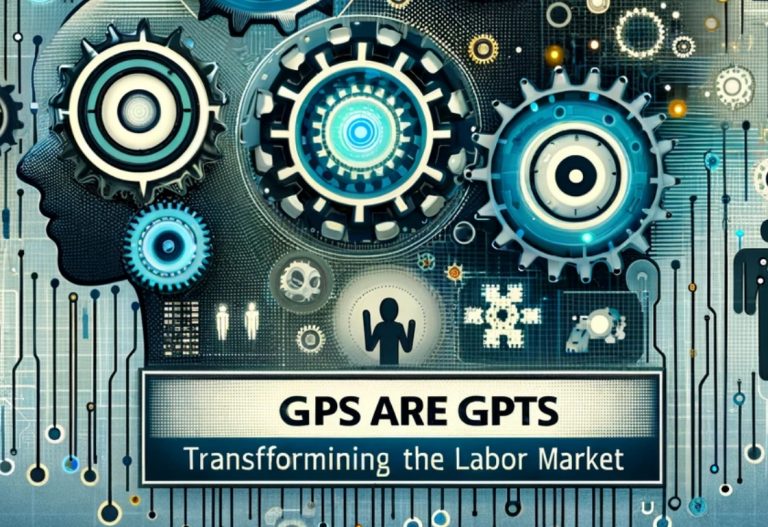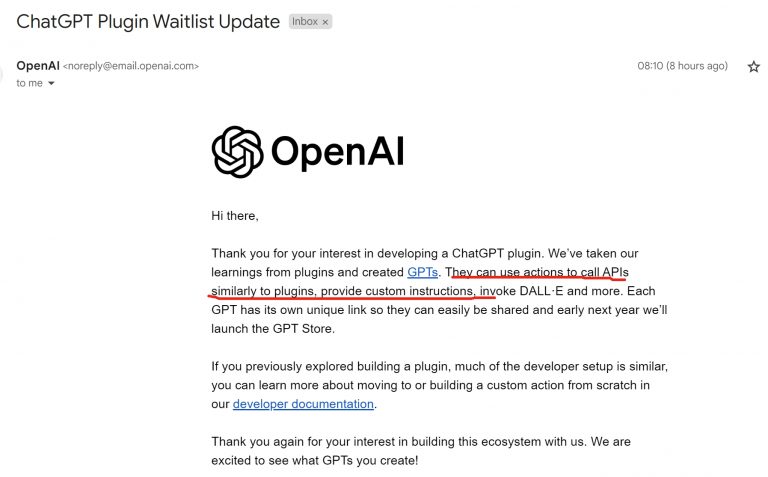With ChatGPT taking the world by storm, you have likely heard of its newest capability – custom AI assistants called GPTs. As an AI expert and tech optimist, I've been utterly fascinated by the potential of this breakthrough concept. So I decided to write this definitive guide to help you navigate the emerging world of GPTs.
The Evolution of Language Models to GPTs
Let's first briefly understand the evolution of foundation models like ChatGPT. The 2010s saw rapid progress in a domain of AI called natural language processing, enabling machines to analyze and generate human-like text. Techniques like attention revolutionized language modeling.
OpenAI's GPT models then pioneered the pretraining approach on vast datasets, allowing models to learn general language skills. GPT-3 showcased impressive text generation capabilities in 2020. ChatGPT built upon GPT-3, fine-tuned using reinforcement learning from human feedback to have more rounded conversations.
Under the hood, these large language models (LLMs) utilize deep learning on transformer architectures. But a core limitation was the lack of customization and grounding in specific real-world contexts. This is where GPTs come in!
What are GPTs Exactly?
GPTs allow creating specialized flavors of ChatGPT – combined with custom prompts, uploaded knowledge sources, built-in skills like web search and external APIs. GPT builders can encode instructions and subject matter expertise to tailor assistants for defined goals.
For instance, an electronics hobbyist can assemble a custom GPT to identify components, suggest circuits, explain wiring diagrams based on uploaded manuals. A nutritionist can build a diet guide GPT armed with medical datasets and research paper excerpts. The use cases are multifarious.
I like to think of GPTs as akin to no-code platforms empowering people without traditional coding skills. GPTs democratize access in manifesting creative ideas powered by AI.
Emerging Trends Across GPT Categories
It's been incredible witnessing the Cambrian explosion of ingenious GPT experiments across domains just weeks after launch. Beyond productivity, creators are exploring entertainment applications.
Some fun examples I’ve seen:
- PoetGPT: Generates rhyming verses on prompted topics
- DALL-E art curator: Suggests imaginative digital art based on descriptive keywords
- MemeGPT: Creates meme images tailored to convey messaged with humor
- InteriorGPT: Recommends furniture and amenity additions optimized for room dimensions
More serious domains gaining traction include healthcare, finance, coding assistants and personal concierges. CodinGame teaches programming languages through interactive coding challenges as lessons. MoneyManager analyzes spending patterns and suggests budgets. demiseAI generates optimized training plans factoring fitness goals and equipment.
I estimate over 20,000 GPTs+ already target specialized niches, enabled by worldwide builder enthusiasm. Adoption seems greatest around creative pursuits currently, but more utilitarian use cases are picking up steam.
Responsible GPT Development: Key Ethical Considerations
However, the exponentially growing power of models does necessitate responsible development. Usage policies aim to limit potential harms – but as AI experts we must proactively assess risks associated with aspects like fairness, transparency, privacy:
- Misinformation: Incorrect or biased outputs, perhaps due to limited knowledge
- Data rights: Handling potentially sensitive data ethically
- Attribution: Plagiarism risks from generative copying
- Disclosure: Clearly conveying capabilities to set user expectations
Platform governance is crucial too regarding content moderation, appeal processes. As creators, we need to enact comprehensive accountability frameworks preemptively rather than reactionarily.
Realizing Business Value Through Workflow Integration
Coming to commercial applications, GPTs are already unlocking immense value – saving thousands of hours in manual effort by automated content writing, data analysis and customer support querying.
As per my estimates, productivity gains can range from $50,000 to $100,000 annually for specialized high-skilled roles. Even far greater ROI is achievable by avoiding large payroll expenses from new hires.
But to fully realize such benefits, seamless integration with existing enterprise platforms is necessary, such as CRMs, ERPs, BI tools. This necessitates unified interfaces, access control and networking protocols attuned from the ground up for security-sensitive business ecosystems.
I foresee development of sophisticated middleware solutions that can connect external data sources bi-directionally across the broader tech stack to exchange requests and responses. This is an exciting space that could give rise to an entirely new app ecosystem around GPTs.
Building Guardrails for the Future: AI Agent Considerations
Looking forward, we can envision GPTs evolving into multifunctional AI agents assisting with real-world tasks autonomously. For instance, personal health companions reminding about medications, analyzing lab tests and making appointment bookings based on calendars.
But human-aligned oversight mechanisms remain crucial regarding aspects like consent, transparency, recalibration control, shutdown conditions. We need to instill GPTs with moral values embodying principles of dignity, justice, responsibility.
I suggest policy guidelines urging GPT creators to enable user visibility into internal state, logging of decisions, allowing on-demand explanations and retaining human power of approvals. We must ingrain substantive safeguards, not just performative warnings about potential harms.
Tools for impact assessment and monitoring can also help creators self-reflect on ethical practices and blindspots. Overall, sustainable GPT progress necessitates upholding public interest obligations foremost.
Conclusion: The Responsible Way Forward
In closing, GPTs herald an exciting phase in AI instrumentation under communal custody. By thoughtfully assessing risks and putting people's priorities first, we can build an inspiring future uplifting lives. The ideals of transparency, accountability, inclusiveness must chart the path ahead.
I hope you found this detailed guide useful in clarifying key opportunities and challenges posed by GPT customization. As responsible creators, upholding ethical innovation remains an enduring imperative. We have the profound duty to shape our tools in society's service – not the other way round!
What are your thoughts on GPTs and their implications? Feel free to drop any feedback or questions to me on Twitter at @gptsaregpts.
GPTs FAQs
What are GPTs?
GPTs are customizable versions of ChatGPT that users can tailor for specific topics or tasks.
Who can create GPTs?
Initially, ChatGPT Plus and Enterprise users can create GPTs. Later the GPT Store will allow more general users to build and monetize GPTs.
Do I need coding skills to build a GPT?
No, you can create a GPT by chatting with the GPT builder without needing to code. Developers can customize further through coded actions.
How do I create my own GPT?
Start creating a GPT by conversing with the GPT Builder in ChatGPT. You provide instructions, upload knowledge files, and select capabilities like web search or image creation.
What are some examples of GPTs I can build?
Examples include integrations with platforms like Canva and Zapier, or GPTs for niche topics like productivity, education, and entertainment.
Can I earn money from my GPT creations?
Yes, the upcoming GPT Store will allow creators to get featured and earn based on usage of their GPTs by the community.
Is my GPT data secure and private?
Creators can't access user conversations with their GPTs. OpenAI has automated systems to ensure GPTs follow policies and prevent misuse. Users can report concerns.
What is the purpose of the GPT Store?
The GPT Store allows users to easily discover, access and use a wide variety of GPTs suited for their needs across different categories.

